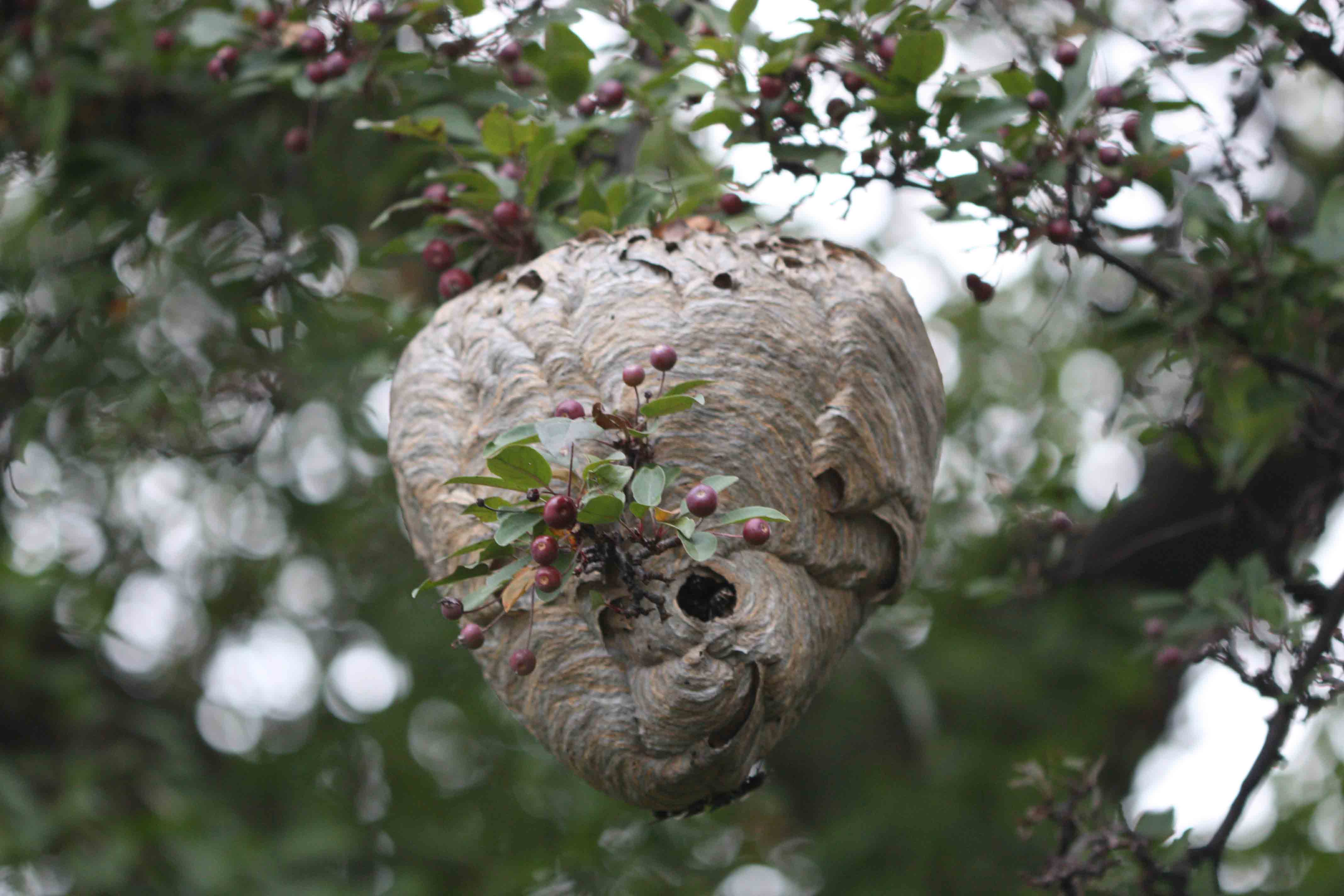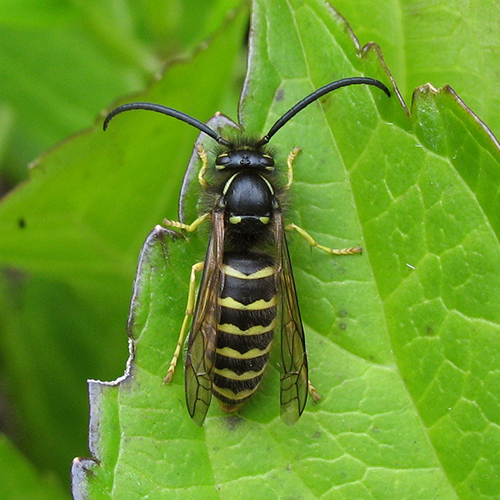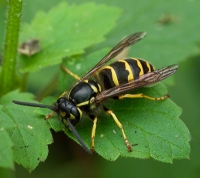 This particular discovery was a large yellowjacket nest, revealed after the apricot tree next to it had dropped its leaves. Its thin, bark-like hive hung heavy as a pendant, barren of wasp activity.
This particular discovery was a large yellowjacket nest, revealed after the apricot tree next to it had dropped its leaves. Its thin, bark-like hive hung heavy as a pendant, barren of wasp activity.
I thought about this summer when there were many wasp nests in the parks. Our staff meetings were peppered with conversations on how best to deal with insect stings and I answered questions about how to avoid aggressive wasps. Slowly it dawned on me that during the past week, wasp activity in the parks had quietly ceased. After all the bustle, discussions, and signs erected in the parks, there was suddenly calm. I considered what the yellowjackets must do to fight through a Wisconsin winter and realized that the wasp and I had something in common. Our work was driven by seasonality. A hidden yellow jacket off-season contrasted with a visibly lively summer.
The native aerial yellowjacket (Dolichovespula arenaria) is a beneficial predacious wasp responsible for the control of many pest insects. They are often confused as bees, but their thin yellow and black-striped bodies are less coarsely haired than that of a honey bee and do not collect pollen. They can also often be confused with the bald-faced hornet which is black and white rather than black and yellow.
 Yellowjacket females are capable of stinging and unlike bees will sting repeatedly with their lance-like barbed stingers. They are one of the country's most common wasp species and are found throughout North America, even into the Arctic Circle. Yellowjackets live in a caste-like social system similar to that of honeybees. The queen is the only reproductive unit in the colony and procreates through sexual reproduction. She lays eggs which later hatch into larvae. The queen is capable of controlling the sex of her young and is responsible for deciding which larvae become male and which become female. The workers (unfertilized females) are responsible for expanding the nest size and helping to care for the young. At the end of the summer, the drones (males) are produced by the queen to fertilize future queens that will live and carry out the colony's future.
Yellowjacket females are capable of stinging and unlike bees will sting repeatedly with their lance-like barbed stingers. They are one of the country's most common wasp species and are found throughout North America, even into the Arctic Circle. Yellowjackets live in a caste-like social system similar to that of honeybees. The queen is the only reproductive unit in the colony and procreates through sexual reproduction. She lays eggs which later hatch into larvae. The queen is capable of controlling the sex of her young and is responsible for deciding which larvae become male and which become female. The workers (unfertilized females) are responsible for expanding the nest size and helping to care for the young. At the end of the summer, the drones (males) are produced by the queen to fertilize future queens that will live and carry out the colony's future.
The worker yellowjacket makes a nest of a pulp-like material made from chewed up wood glued together with yellowjacket saliva. The nest provides yellowjackets protection and is temperature regulated when the wasps fan their wings. The paper-like structure of the aerial yellowjacket is typically used for only one year, however some extremely large nests in the southwestern area of the U.S. will be used another year. They can be found hanging from trees, tall bushes and from man-made structures such as house eaves.
In early summer workers feed wasp larvae a protein-rich diet of meat from chewed up caterpillars and insects. In late summer to early fall, yellowjackets typically switch to a sugar-based diet, and will aggressively pursue garbage cans, picnics, soft drinks, etc. Male adults die off in the winter (or after mating) while fertilized females (the young queens) will seek out locations where they can over-winter and expand new colonies in the spring.
Yellowjacket Facts:
- Yellowjackets usually sting in defense of their colony.
- While yellowjackets may be a nuisance at your summer picnics, they can be beneficial too. They help control some crop pests and serve as a food source for many animals such as birds, skunks, frogs, and other insects.
- Many people and pets can be severely allergic to insect stings. While bee allergies are more common, wasps are also responsible for causing many dangerous allergic reactions.
- Wasps can also spread crop diseases. Yellowjackets can carry and spread potato fire blight.





